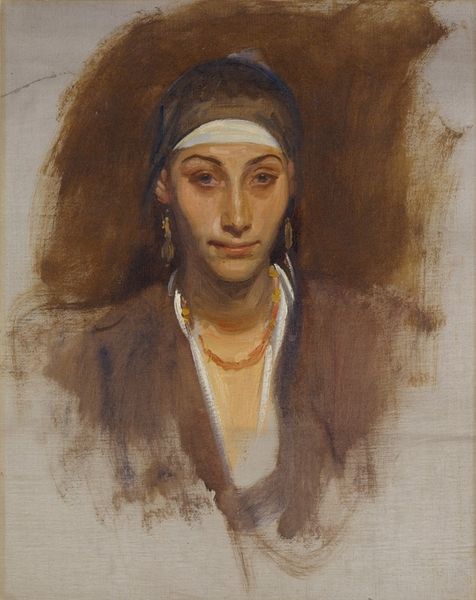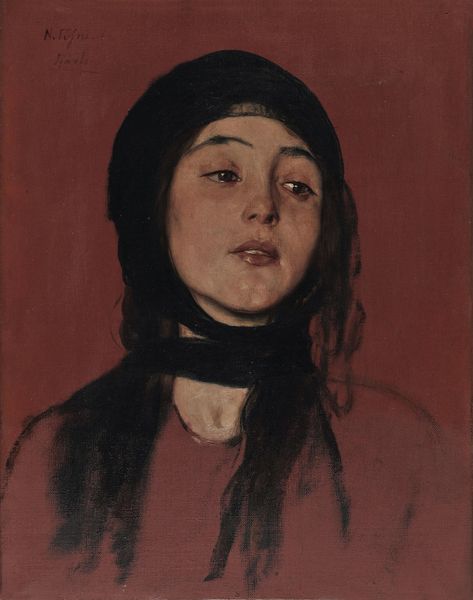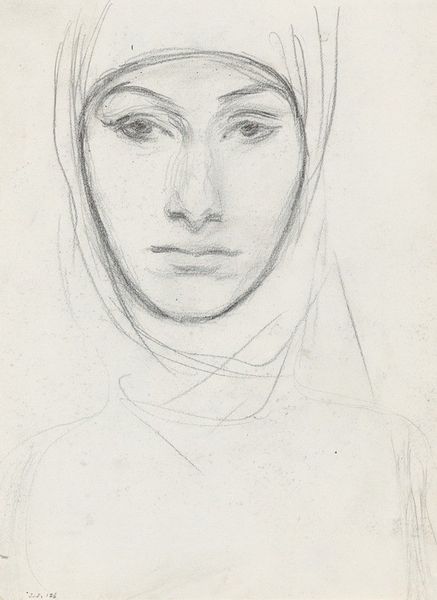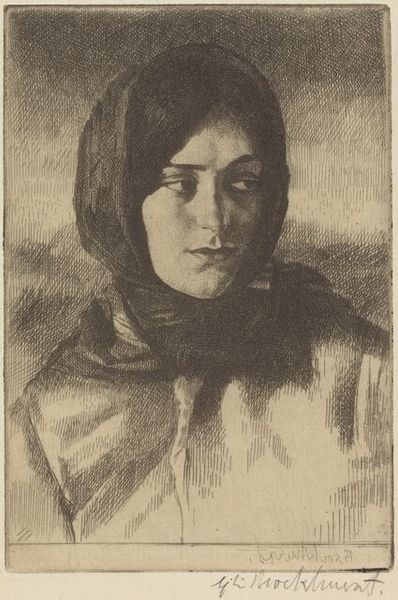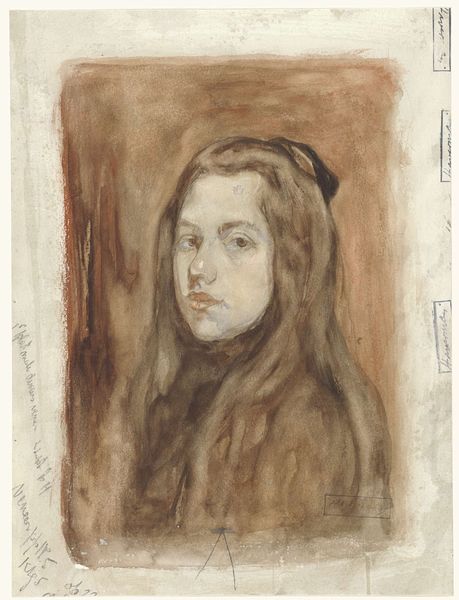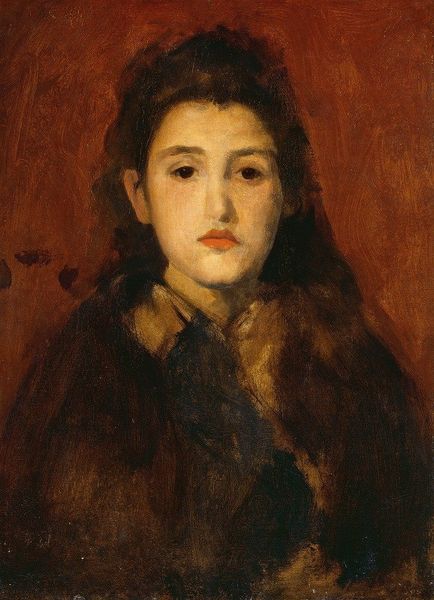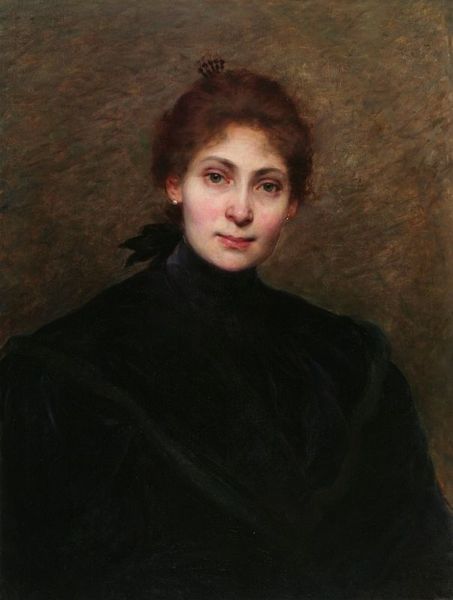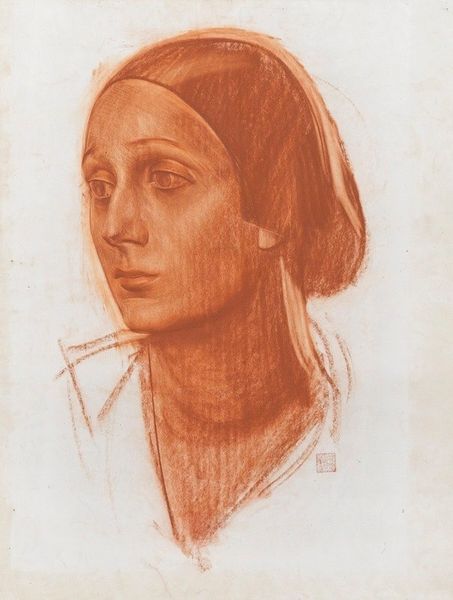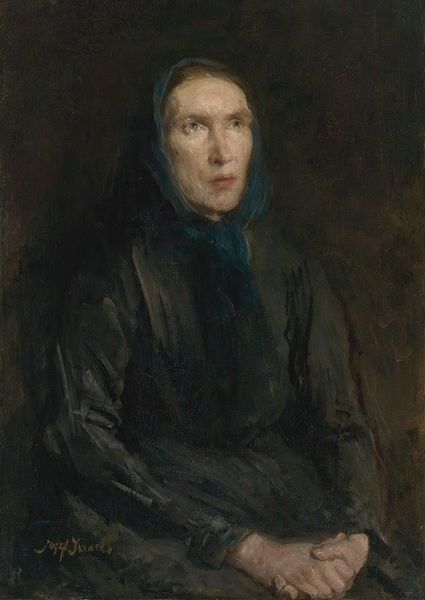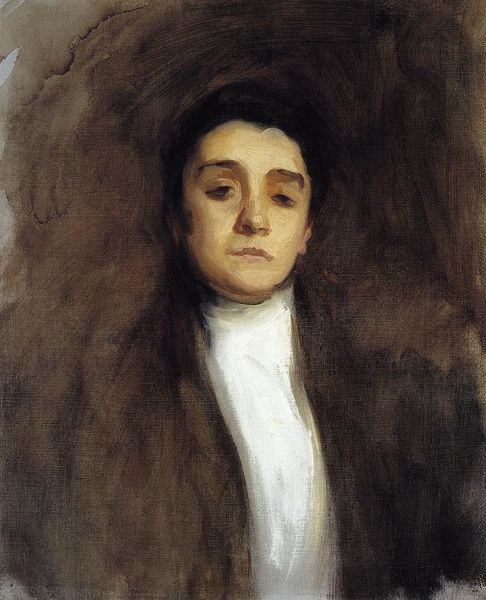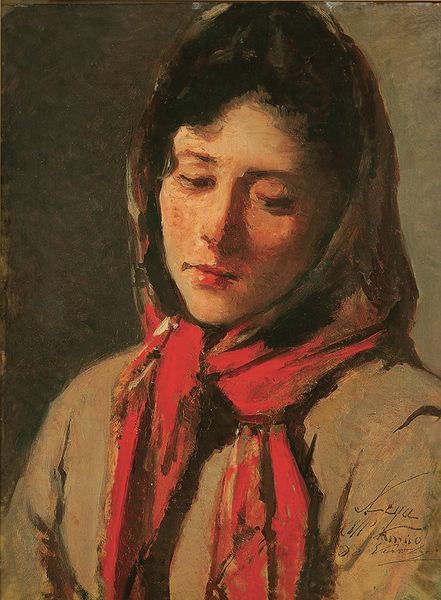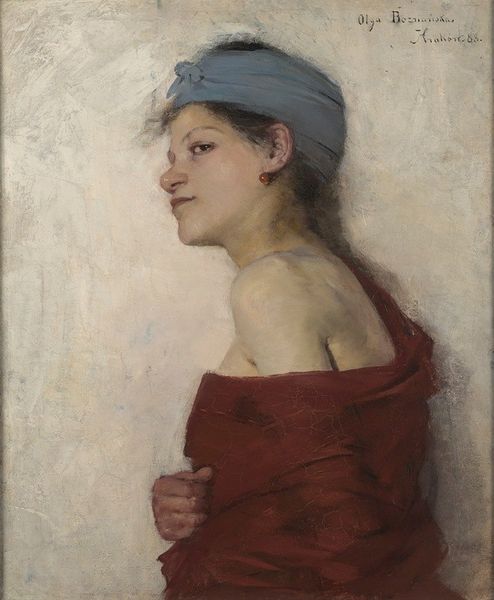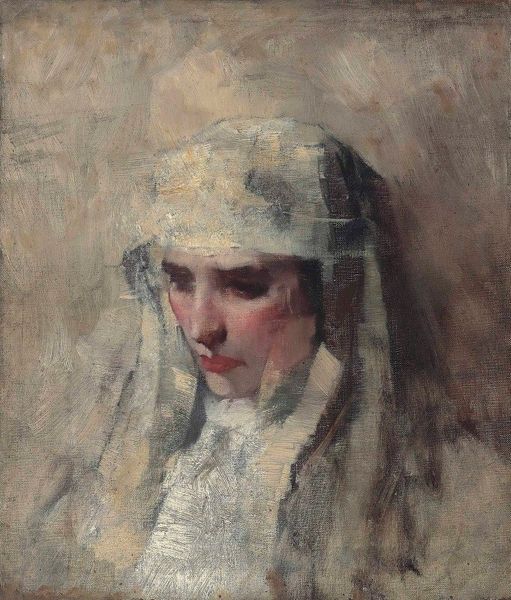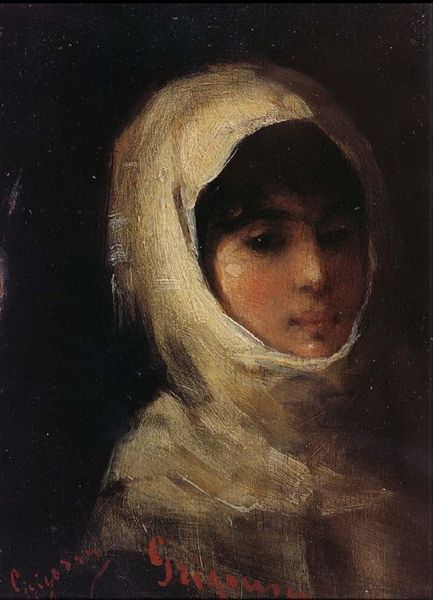
Copyright: Public Domain: Artvee
What are your first impressions of this woman based on her portrait? This portrait by the American artist John Singer Sargent (1856-1925) is known only as ‘Egyptian Woman’. The sitter’s actual identity is unclear. We do know, however, that Singer Sargent encountered this woman during his travel to Egypt in the early 1890s. Singer Sargent has captured this woman in visible, blocky brushstrokes of oil paint on canvas. His colour palette is limited; the image is dominated by deep shades of brown and black. This creates a striking contrast with the paler tones used for the woman’s skin. Only the sitter’s head and shoulders are shown in this portrait. She is placed in the centre of the composition, and gazes out towards the viewer. This direct eye contact creates a sense of confidence. We feel as though the woman sees us, just like we see her. ️ Singer Sargent has been called the ‘leading portrait painter’ of the Edwardian era, beginning in the early twentieth century. He is best known for his depictions of glamorous, high-society figures. As you can see in ‘Egyptian Woman’, the artist preferred to paint from life, with his subject seated in front of him. He believed this provided his portraits with a sense of authenticity. ️ The realism of this work is especially striking. Despite Singer Sargent’s unique technique of drawing with a paintbrush rather than a pencil, his direct observation allowed for a level of detail that would not otherwise be possible. His paint-drawing technique has created a carved, energetic quality to the face of this woman, while the lower portion of the canvas is more impressionistic.
Comments
No comments
Be the first to comment and join the conversation on the ultimate creative platform.
